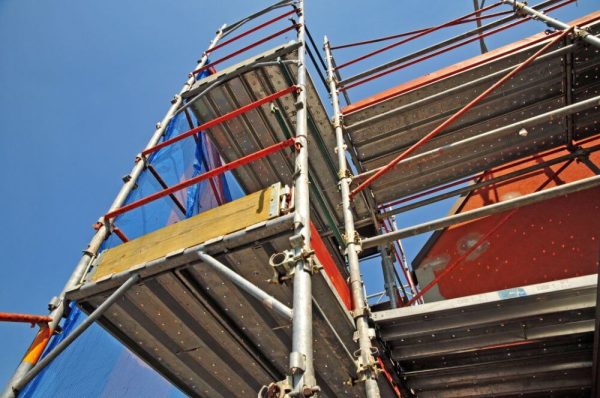Falls are the leading cause of construction-worker fatalities, accounting for one-third of all on-the-job deaths in the industry.
And while construction falls can be deadly, they are also preventable. Scaffolds can play a major role to prevent fatal falls. But just having scaffolds on site is not enough. It is important that a qualified scaffold contractor is also present on site. Adherence to safety standards on a construction site is key to ensuring everyone around is safe.
According to the Occupational Safety and Health Administration (OSHA), failure to follow scaffolding safety requirements is among the most common safety violations in the United States. In Africa, poorly erected and or dismantled scaffolds have caused major injuries or even deaths.
Major hazards in scaffolds include; falls, Scaffold collapse, Struck by falling materials and Electrocution
So how do you prevent these hazards?
Engage competent professionals
Scaffolds must be designed, erected, altered and dismantled only by competent people and the work should be carried out under the direction of a competent supervisor.
A knowledgeable individual who can perform preplanning will reduce the chances of injury and save money for any task. The competent person will also be needed when building, moving, or dismantling a scaffold.
A competent person must also inspect the scaffold daily to ensure the structure remains in a safe condition. Improper construction can lead to a total collapse of the scaffold or falling components – both of which can be fatal.
According to OSHA’s scaffolding standard a competent person is “one who is capable of identifying existing and predictable hazards in the surroundings or working conditions, which are unsanitary, hazardous to employ-ees, and who has authorization to take prompt corrective measures to eliminate them.”
UK’s National Access and Scaffolding Confederation (NASC) has published Safety Guidance SG4 ‘Preventing falls in scaffolding operations.’ Contractors can also follow similar guidance provided by the manufacturers of system scaffolding.
Have good fall protection equipment
Guardrails, a personal fall arrest system, or both must protect each employee more than 10 feet (3.1 meters) above a lower level from falling. A competent person must inspect ropes for defects prior to each workshift and after every occurrence that could affect a rope’s integrity.
Have the right scaffold
The choice of the suitable scaffolding for carrying out a specific activity depends on the characteristics of the site (space available in height, space available on the plan), the working height and atmospheric conditions, in particular the wind.
The employer will choose the model and configuration of the scaffolding most suitable for the nature of the work to be performed, with particular regard to the height of the work platform in relation to the working height and the overall dimensions on the ground, ensuring its stability through the systems provided by the manufacturer.
The factors to consider for the correct choice include; nature of the work to be carried out, height, nature of structure on which to anchor the scaffolding among other factors.
Also Read
JCB wins its biggest ever deal in the UK
CASE launches new CX220C LC HD excavator in Sudan

